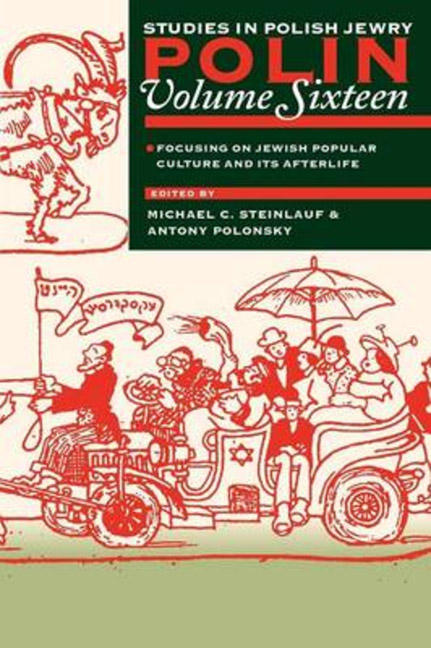Book contents
- Frontmatter
- Dedication
- Editors and Advisers
- Preface
- Polin
- Polin: Studies in Polish Jewry
- Contents
- Note on Place Names
- Note on Transliteration
- PART I JEWISH POPULAR CULTURE IN POLAND AND ITS AFTERLIFE
- IN PRE-WAR POLAND
- AFTERLIFE
- PART II DOCUMENTS
- PART III NEW VIEWS
- PART IV REVIEWS
- REVIEW ESSAYS
- Some Remarks on Leszek Hońdo's Study of the Old Jewish Cemetery in Kraków
- The Last Controversy over Ritual Murder? The Debate over the Paintings in Sandomierz Cathedral
- The Anti-Zionist Campaign in Poland of 1967–1968: Documents
- BOOK REVIEWS
- CORRESPONDENCE
- OBITUARIES
- Notes on the Contributors
- Glossary
- Index
The Last Controversy over Ritual Murder? The Debate over the Paintings in Sandomierz Cathedral
from REVIEW ESSAYS
- Frontmatter
- Dedication
- Editors and Advisers
- Preface
- Polin
- Polin: Studies in Polish Jewry
- Contents
- Note on Place Names
- Note on Transliteration
- PART I JEWISH POPULAR CULTURE IN POLAND AND ITS AFTERLIFE
- IN PRE-WAR POLAND
- AFTERLIFE
- PART II DOCUMENTS
- PART III NEW VIEWS
- PART IV REVIEWS
- REVIEW ESSAYS
- Some Remarks on Leszek Hońdo's Study of the Old Jewish Cemetery in Kraków
- The Last Controversy over Ritual Murder? The Debate over the Paintings in Sandomierz Cathedral
- The Anti-Zionist Campaign in Poland of 1967–1968: Documents
- BOOK REVIEWS
- CORRESPONDENCE
- OBITUARIES
- Notes on the Contributors
- Glossary
- Index
Summary
A SERIES of religious paintings hangs in the old cathedral in Sandomierz. One of them, depicting a ritual murder, is currently the subject of controversy. In 1710 the Revd Stefan Żuchowski commissioned a huge painting (10 square metres) on the topic from Karol de Prevot; Żuchowski emphasized that he wanted the picture to serve as ‘clear evidence of Jewish cruelty’. The painter did an excellent job. A Jew with a bloodthirsty grimace drives his knife into the body of a child lying on a table; a child is cut up and the pieces are thrown to a dog; and a child is trapped in a barrel spiked with nails.
The painting has hung there for a long time. In 2000 a debate began over what should be done with a painting whose message was so clearly and unambiguously antisemitic. Should a depiction of ritual murder be on display in a church even though Church doctrine has long recognized that Jews never killed children for matzah? On the other hand, should works of art be censored? If they are illegal or immoral, should they be removed?
The subject of the painting in Sandomierz Cathedral soon ceased to be merely a local issue when discussion of it filled the Polish press for several weeks. The main problem seemed to be that the myth of ritual murder, though it should by now have been relegated to the past along with that of the existence of witches, was a subject whose interest, in Poland at least, was by no means confined to historians and folklorists. This should come as no surprise, since the issue of ritual murder was still taken seriously by the press in the period between the two world wars. Despite official Church prohibitions, accusations against the Jews were still being made during that period. Indeed the Kielce pogrom, which is still alive in people's memory, was sparked by a rumour that a Christian boy had been killed for matzah.
Even today it is not unknown for articles to appear in the press in which the author—sometimes a priest—expresses his or her uncertainty about secret practices within the Jewish community or tries to unravel the mysteries of alleged ritual murders.
- Type
- Chapter
- Information
- Focusing on Jewish Popular Culture and Its Afterlife , pp. 483 - 490Publisher: Liverpool University PressPrint publication year: 2003



